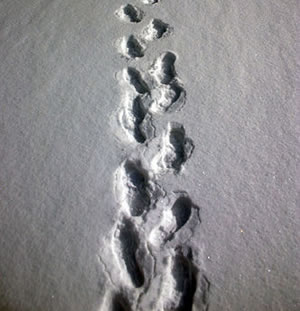Could hordes of tourists collectively achieve what mining companies have failed to do in Antarctica and stuff the place up?
In 1991 the signatories to the Antarctic Treaty reached a landmark agreement to keep miners off the White Continent, but this hasn’t entirely stopped people from making a coin off the most pristine environment in the world. We tend to think of tourism as gentle on the environment – heck we even call it ‘eco-tourism’. However the same extreme cold that makes mining impossible also preserves everything left behind on the White Continent. It can be difficult to leave nothing but your footprints. Did you bring your own pooper scooper?
Antarctic tourism started in the 1950s and 60s when the Argentines and Chileans started organising short trips across the Drake Passage to the Antarctic Peninsula. Until the 1990s, tourism remained an élite trip, with only around 1,000 lucky visitors making it to the ice every year. Since then, numbers have boomed, reaching a peak of 33,000 in the heady days of 2007. The world’s economic woes and new regulations banning the use of heavy fuel oil have dampened the numbers of people with the spare cash to splash out on a trip to the Last Continent. However as the GFC recedes, the people are returning.
The Antarctic Peninsula, in particular, has remained the focal point for visitors, with some spots receiving over 10,000 visitors every year. Our own Ross Sea is much harder to get to, so visitor numbers remain in the hundreds.
Tourist operators need permits to operate, but some countries are stricter than others. Given that Antarctica is governed by consensus across many nations it is difficult to monitor let alone enforce anything. Just imagine if a tourist operator is based in one country, charters a ship with a different flag and they apply to a third nation for the tourism permit. You can only imagine how the international negotiators would sort out that mess. Similar problems can occur if someone from one country commits a crime on someone from another country.
And of course not everyone bothers with paperwork. The Peninsula is so close to South America it is a viable destination for adventurous yachties wanting a beer and barbie. Inevitably some of these folk don’t give a toss. Even the remote Ross Sea doesn’t make it immune from the odd nutter – remember the self-proclaimed ‘Viking’ Jarle Andhøy?
All in all, when you add in crew and guides, some 75,000 people visited Antarctica in the summer of 2007/08. Not all of them set foot on the ground, but this still gives a tremendous scope for disruption and destruction of landscape and wildlife.
It may seem like a small number, but tourists tend to congregate in the small number of ice-free coastal areas on the continent – the same places the wildlife is. People don’t go around clubbing seals or penguins these days, but they can disturb the wildlife or accidentally introduce foreign organisms. The cold also makes it difficult for any litter or pollution caused to be broken down.
Then of course there are the risks posed by shipping. Two tourist ships have sunk in Antarctic waters, endangering human lives as well as threatening catastrophic environmental damage with the resulting fuel spill. The sinking of the Bahia Paraiso in 1989 spilled 600,000 litres of diesel fuel into the ocean – roughly double the amount of fuel spilled by the recent Rena disaster in the Bay of Plenty. Lucky it was diesel, which biodegrades reasonably well, rather than the kind of heavy fuel oil the Rena was carrying. Thanks to lobbying by New Zealand and Norway, the worst kind of heavy fuels have been banned from Antarctic waters since August 2011. This will have the happy side effect of keeping away the really massive cruise ships: this may have contributed to the aforementioned recent drop-off in tourist numbers. However, this hasn’t entirely removed the risk of a shipping accident and the attendant pollution it would bring. Not everyone operating in the area has an ice strengthened vessel, or even up to date nautical charts.
Of course, tourism brings positive benefits as well as risks. As our own experience on the Our Far South journey made plain, the tourist experience creates a network of people who are passionate about protecting the region. Nature rarely gets a vote even in the most enlightened of democracies, so having people as advocates is absolutely necessary.
However, more regulation is needed to ensure the impact of tourism is positive. In particular tourist operators need to be charged (in time or volunteer sweat) to cover the cost of monitoring and maintaining the areas visited. In the absence of action by Antarctic Treaty partners, tourism operators are self-regulating to minimise damage. They are doing good work, but they won’t stop the inevitable rogue operator as tourism increases. And increase it will with the inevitable pursuit of the dollar. In fact, some cash-strapped Antarctic Treaty partners like Uruguay have even been caught chasing a buck by offering tourists bunks in their scientific bases. The time has come for Antarctic Treaty partners to treat the threat of tourism as seriously as they did mining 22 years ago.
Book and bears from the Our Far South tour
All proceeds go to the Million Dollar mouse fund


